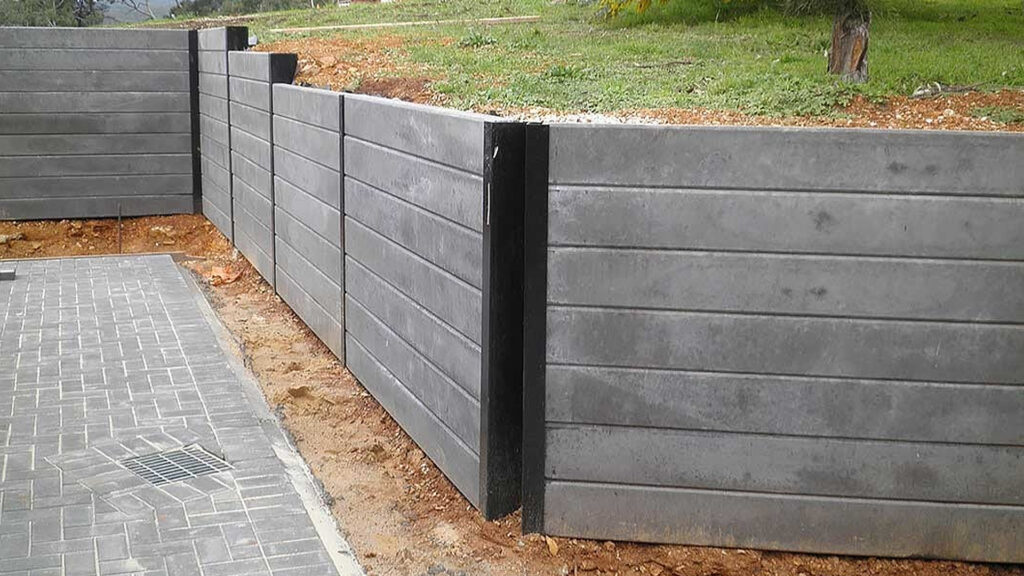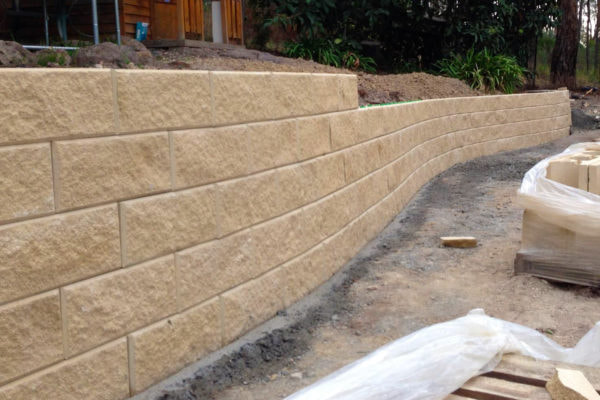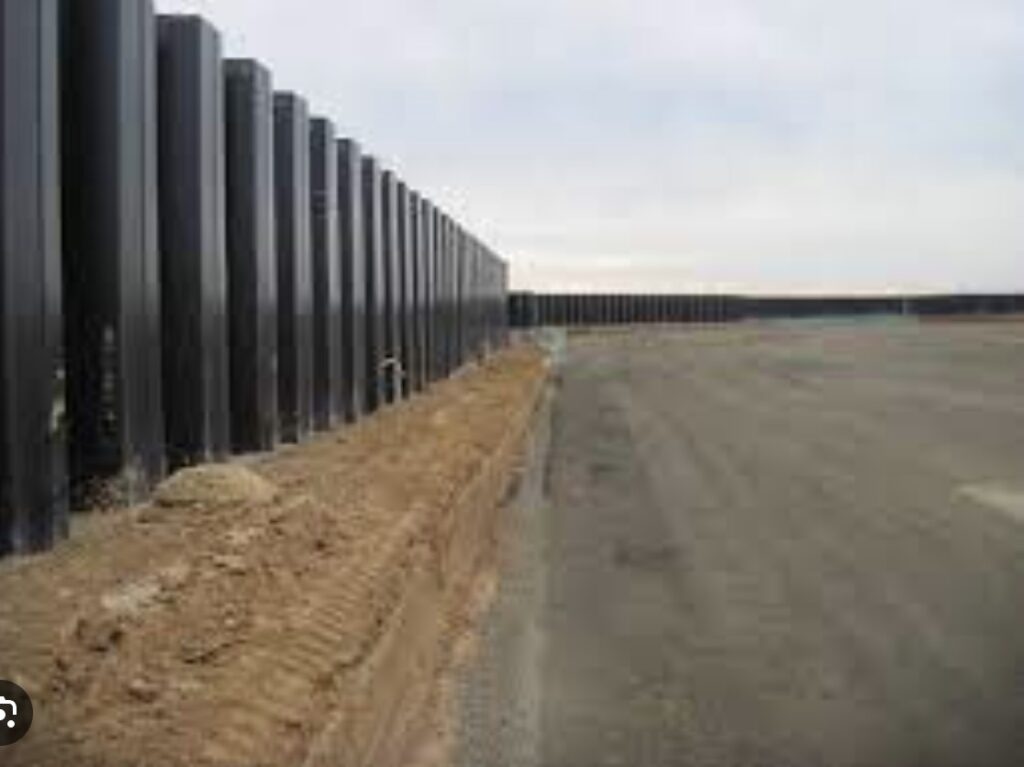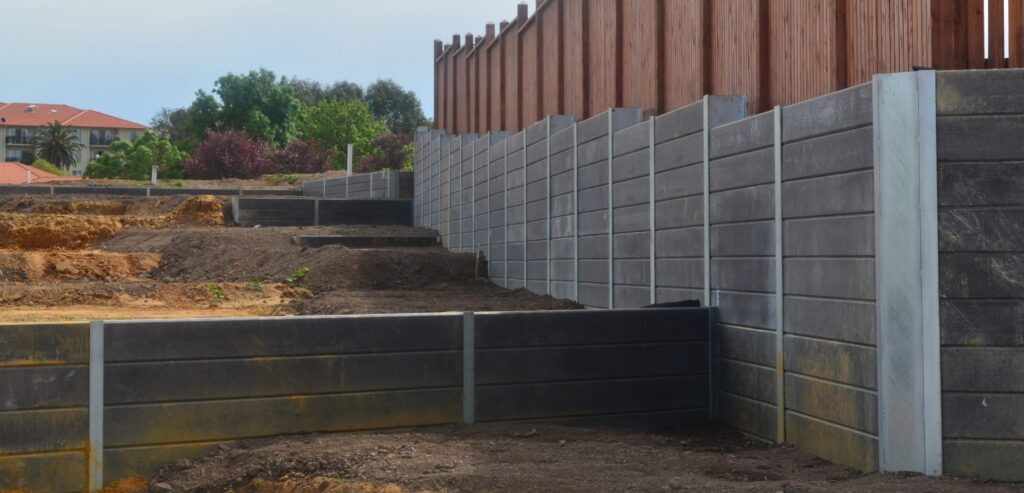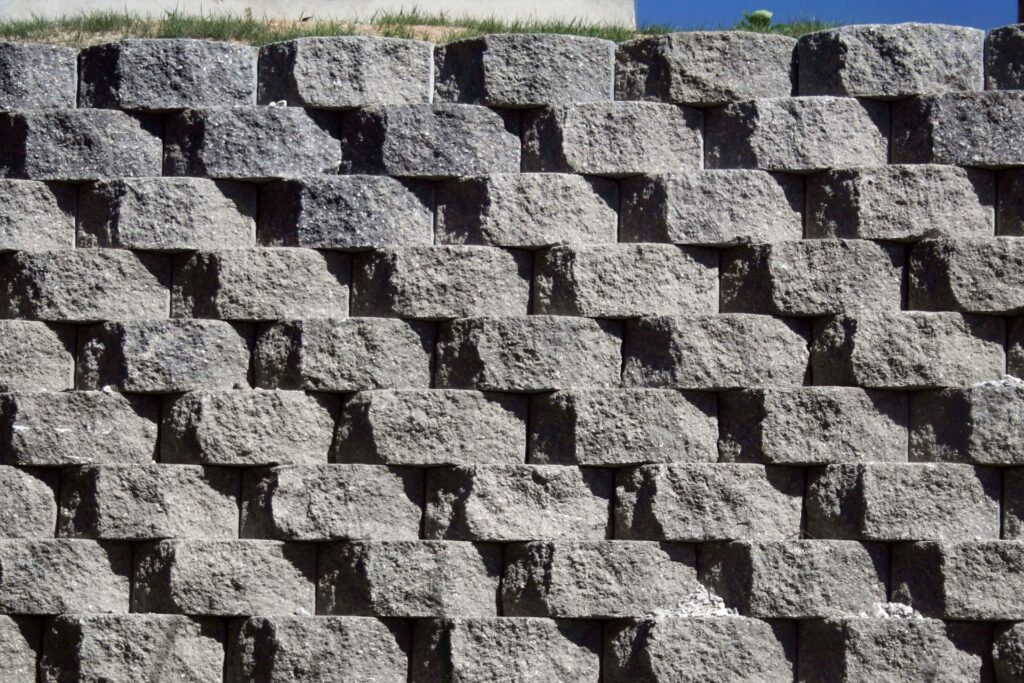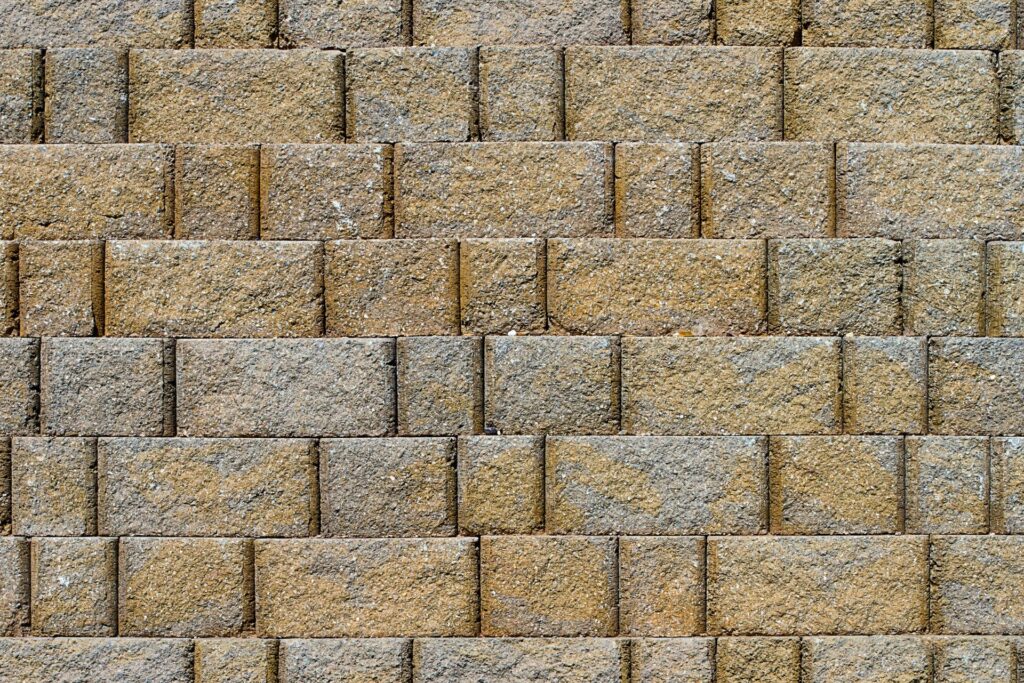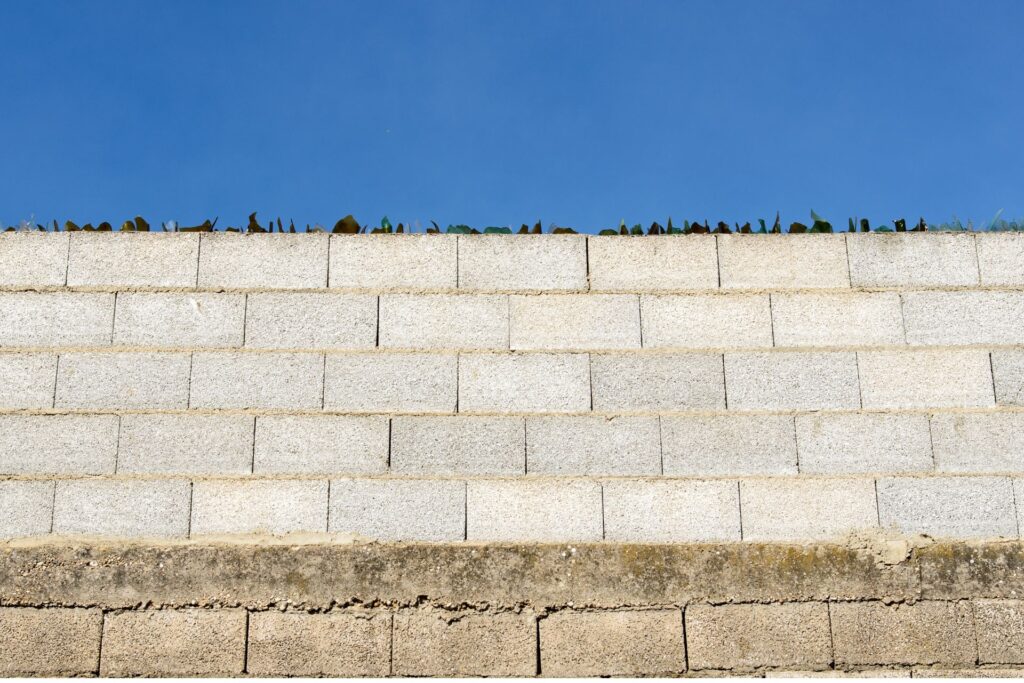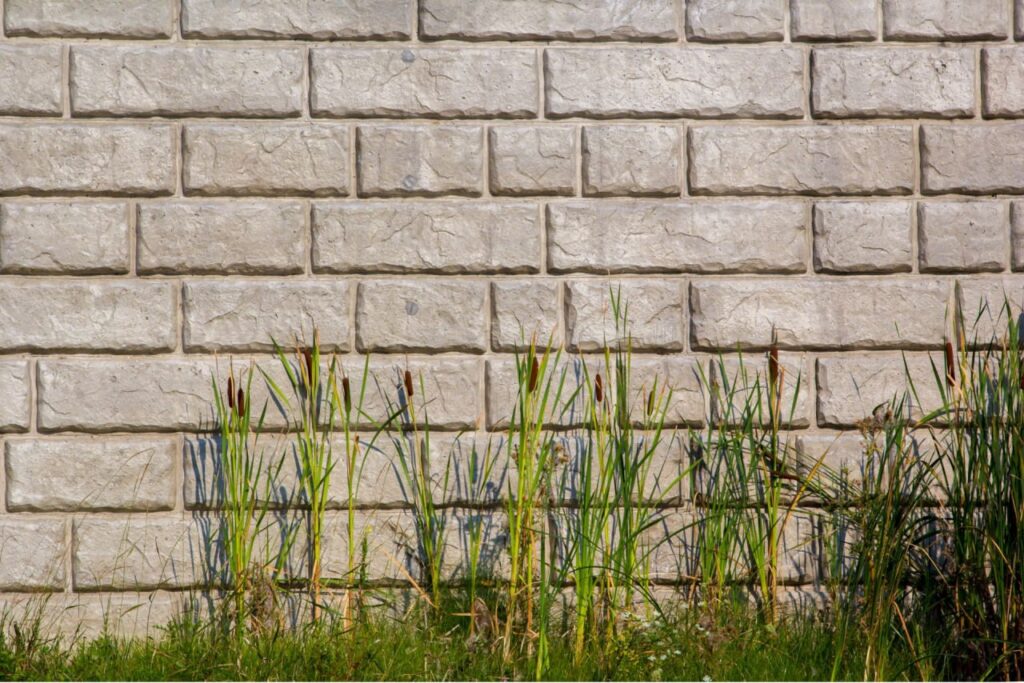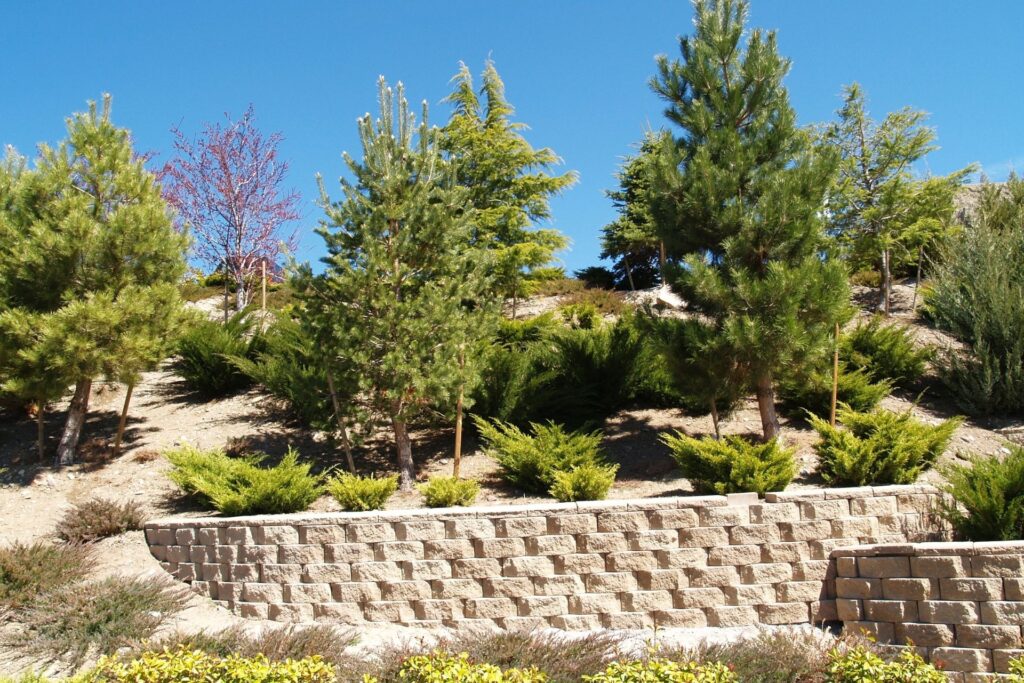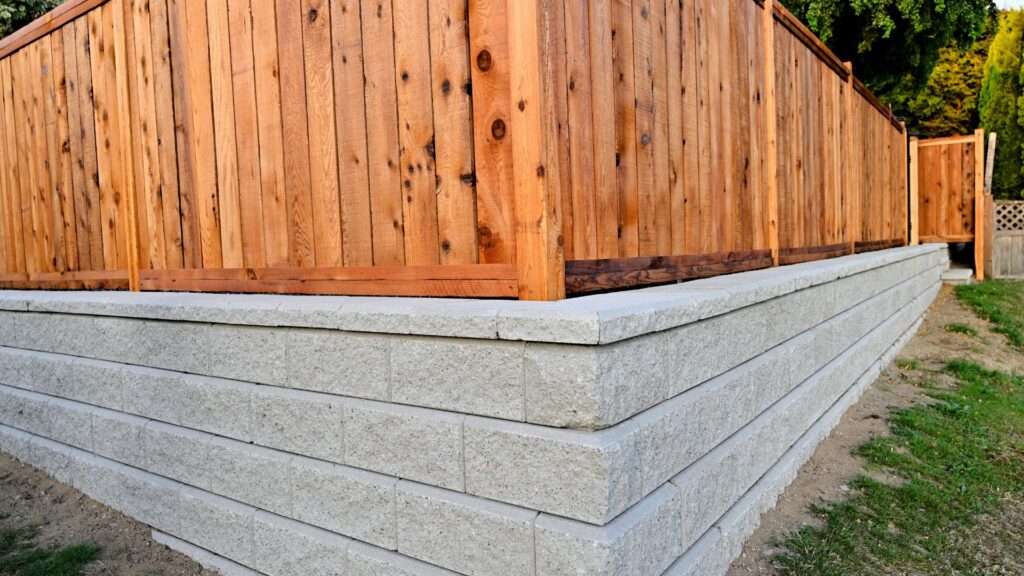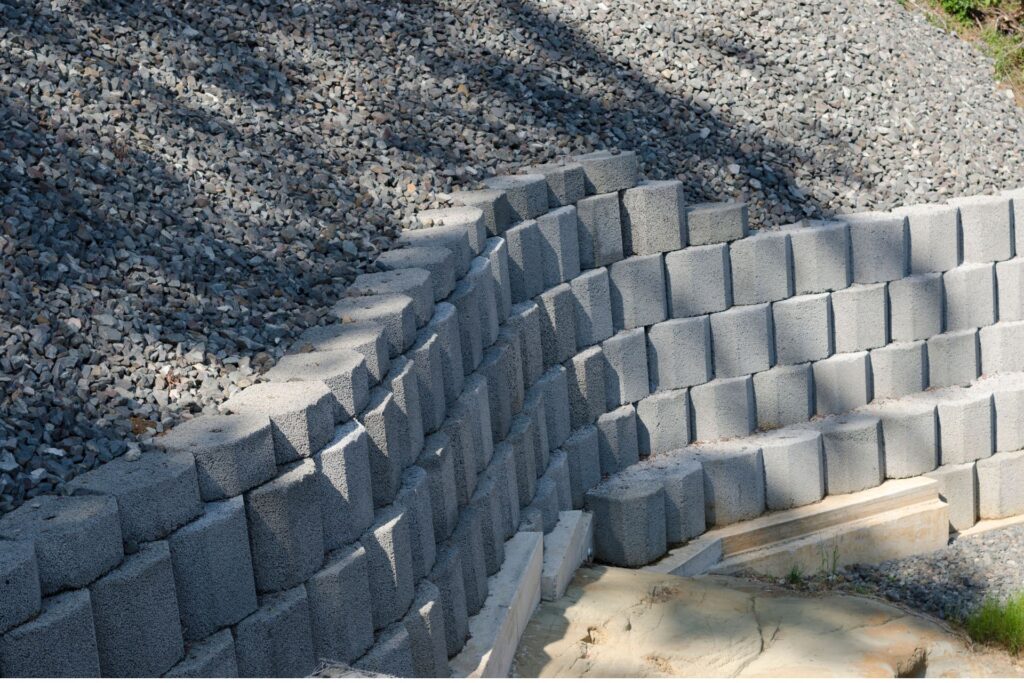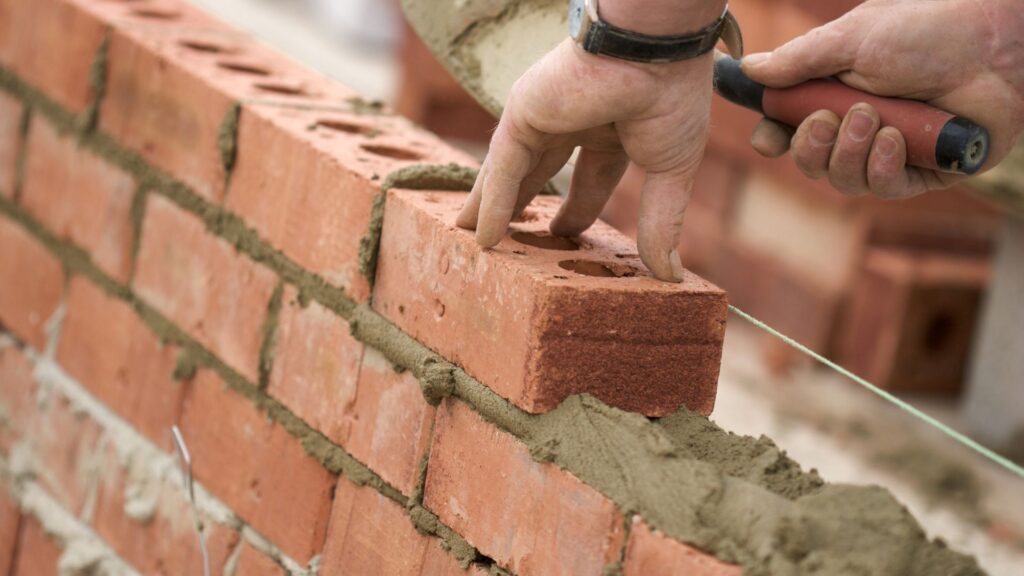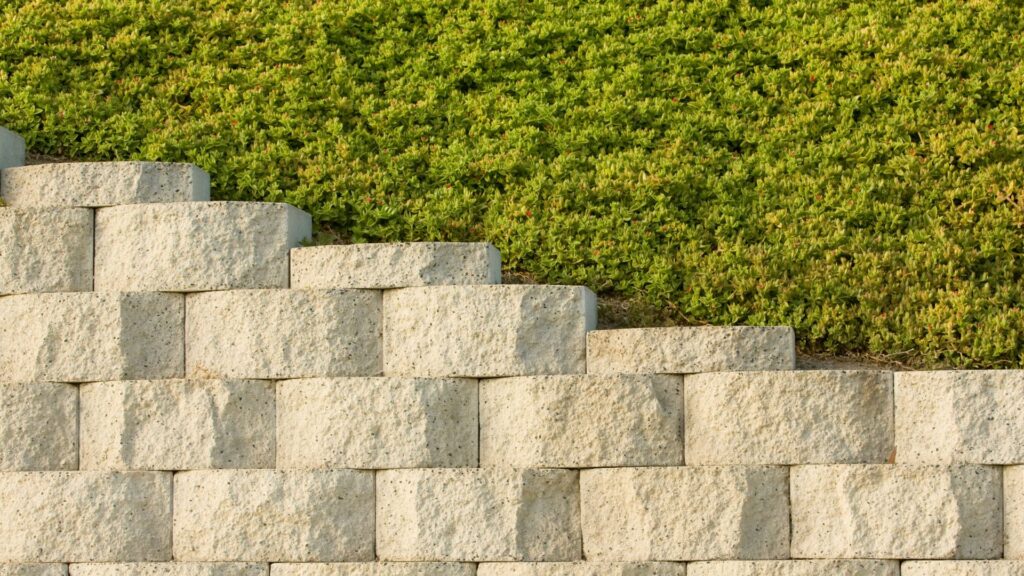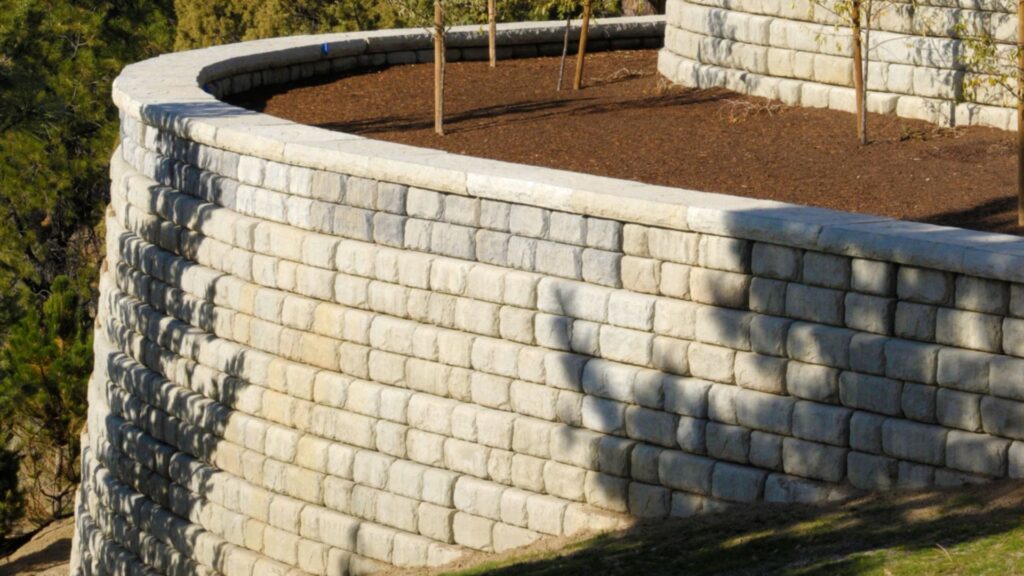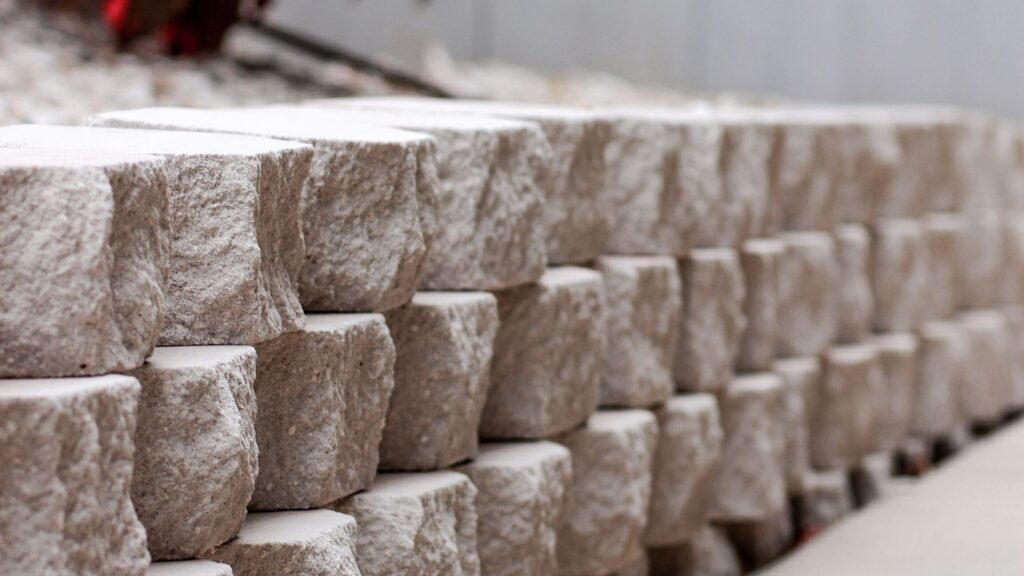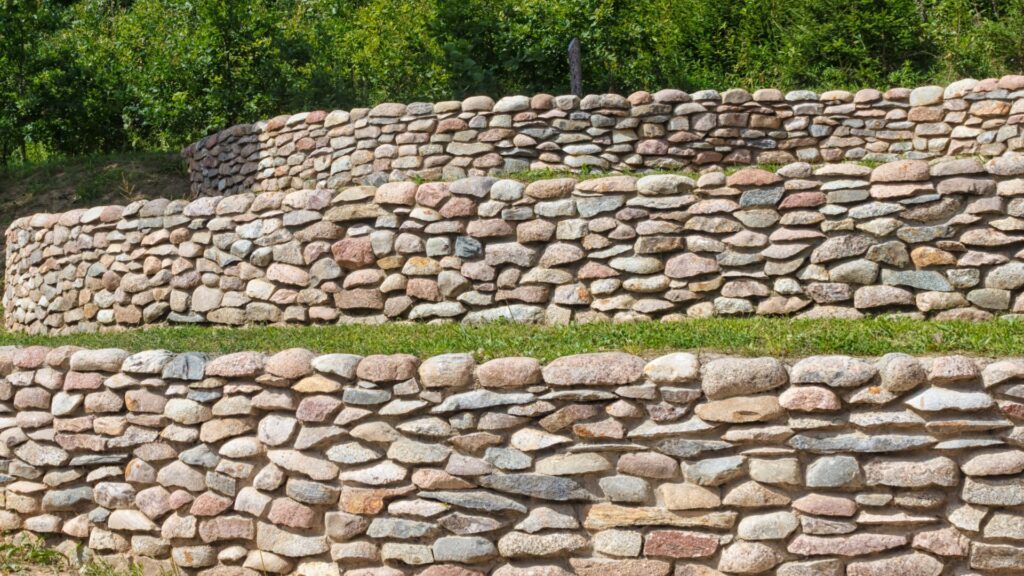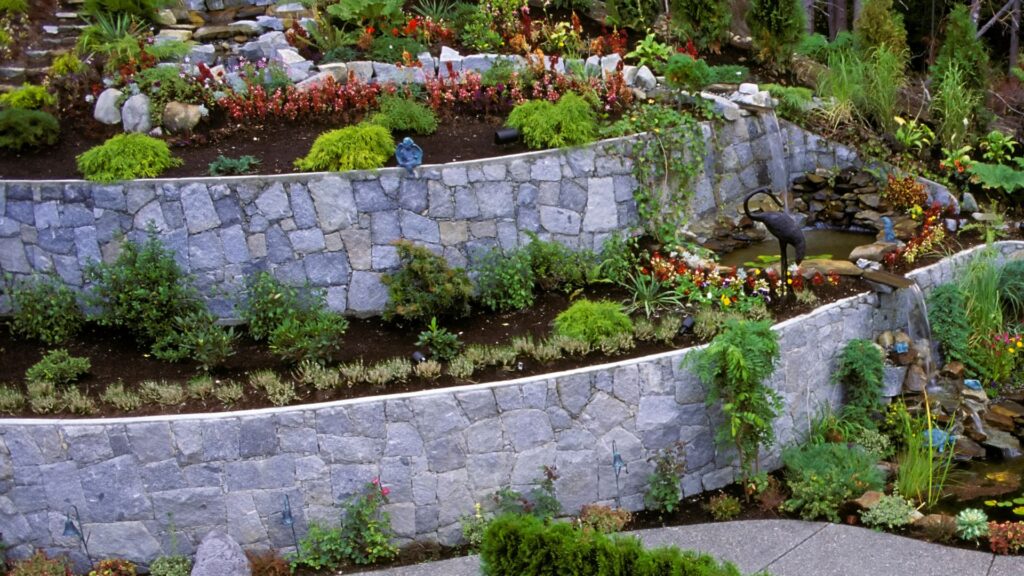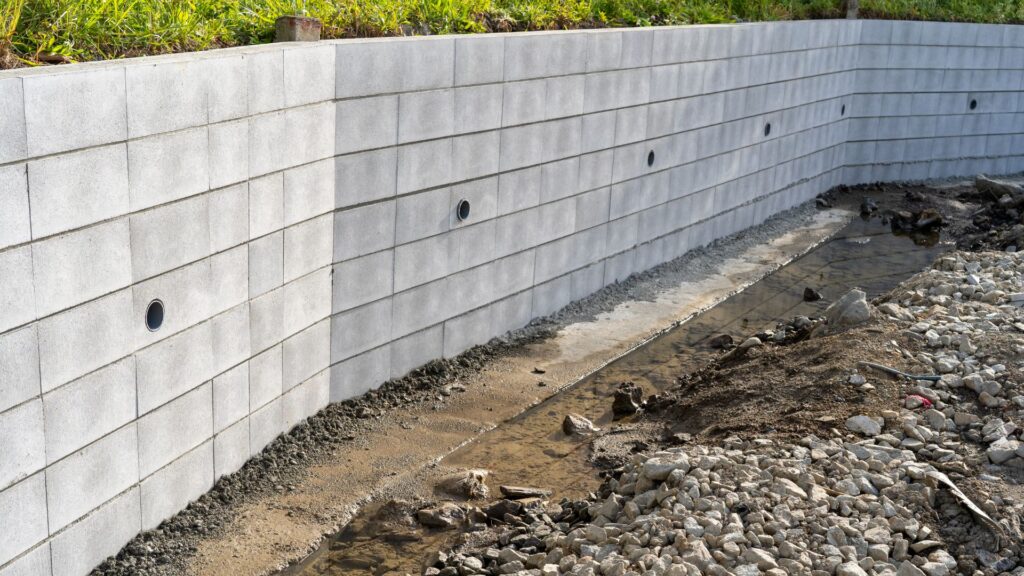Welcome to your ultimate guide on choosing the best sleepers for retaining walls! Whether you’re a DIY enthusiast looking to enhance your backyard or a homeowner ready to tackle a landscaping project, selecting the right sleepers is a critical first step. Not only do sleepers provide the structural backbone for your retaining wall, but they also play a huge role in the overall appearance and durability of your project. From the natural beauty of timber to the strength of concrete and the eco-friendly appeal of recycled plastic, the options can be overwhelming—but don’t worry, we’re here to help! In this post, we’ll walk you through the different types of sleepers, their pros and cons, and everything you need to consider before making your choice, so you can build a stunning, long-lasting retaining wall with confidence.
The best sleepers for retaining walls include timber sleepers, recycled plastic sleepers, concrete sleepers, and metal sleepers. Timber sleepers, available in hardwood and softwood, offer a natural aesthetic but may require more maintenance. Recycled plastic sleepers are durable and eco-friendly, while concrete sleepers provide maximum strength and longevity. Metal sleepers, though modern and industrial, offer durability with a sleek finish. Choosing the right sleeper depends on your budget, environmental factors, and the desired look of your retaining wall.
- What Are Sleepers And Why Use Them For Retaining Walls
- Types Of Sleepers For Retaining Walls
- Key Factors To Consider When Choosing Sleepers For Your Retaining Wall
- Step-By-Step Guide: How To Build A Retaining Wall With Sleepers
- Maintenance Tips For Keeping Your Retaining Wall In Top Shape
- Common Mistakes To Avoid When Using Sleepers For Retaining Walls
- FAQs: About Best Sleepers For Retaining Wall
- What are sleepers used for in retaining walls?
- Which type of sleeper is best for retaining walls?
- How long do timber sleepers last in retaining walls?
- Do I need to treat timber sleepers for my retaining wall?
- Are recycled plastic sleepers strong enough for retaining walls?
- Can I build a retaining wall with sleepers by myself?
- How deep should the foundation be for a retaining wall with sleepers?
- What’s the difference between hardwood and softwood sleepers?
- Can metal sleepers corrode in retaining walls?
- How much do sleepers cost for retaining walls?
- Conclusion
What Are Sleepers And Why Use Them For Retaining Walls
Definition of Sleepers
Sleepers, traditionally known as railroad ties, have long been used in the rail industry to support train tracks. These solid, rectangular pieces of timber were originally placed perpendicular to the rails, distributing the load of passing trains while keeping the tracks in place. However, sleepers have since found their way into the world of landscaping and construction, where their strength, durability, and rustic appeal make them a popular choice for a variety of outdoor applications, including retaining walls.
In modern landscaping, sleepers can be made from a range of materials, including treated wood, concrete, and even recycled plastic. However, wooden sleepers, often made from hardwood or treated softwood, remain the most commonly used type. Their robust nature and versatility allow them to be used in numerous structural and decorative ways, making them a go-to option for builders and DIY enthusiasts alike.
Why Sleepers Are Ideal for Retaining Walls
1. Strength and Durability
One of the main reasons sleepers are ideal for retaining walls is their exceptional strength and durability. Originally designed to withstand the weight of heavy trains, sleepers are naturally strong and capable of withstanding immense pressure. When used in retaining walls, they can effectively hold back soil, preventing erosion and maintaining the integrity of your landscape. Whether exposed to varying weather conditions or constant contact with soil, treated timber sleepers resist rot, decay, and insect damage, making them a long-lasting solution for outdoor construction projects.
2. Aesthetic Versatility
Sleepers not only offer strength but also bring aesthetic appeal to your garden or outdoor space. Their natural, rustic appearance makes them a perfect fit for landscapes that aim to blend into the natural environment. Wooden sleepers, in particular, have a warm and organic look that can soften the hard lines of a garden or yard, creating a seamless transition between nature and constructed elements. They can be arranged in a variety of ways—vertically, horizontally, or even staggered—providing endless design possibilities. This versatility allows sleepers to complement both traditional and modern outdoor aesthetics.
3. Cost-Effectiveness
Compared to other materials such as stone or concrete, sleepers are often a more affordable option for constructing retaining walls. While stone or concrete walls can require significant investment in both materials and labor, sleepers offer a budget-friendly alternative without sacrificing durability or strength. Timber sleepers, in particular, can be sourced at lower costs, making them accessible for both large and small-scale projects. Additionally, their ease of installation can reduce labor expenses, as many homeowners can install sleeper retaining walls themselves with basic tools and a bit of planning.
In conclusion, sleepers offer a unique combination of strength, aesthetic appeal, and affordability, making them a smart choice for retaining walls in any landscape. Their durability ensures that they can stand up to the test of time and the elements, while their natural look adds a touch of rustic charm to your outdoor spaces. Whether you’re looking to prevent soil erosion, create garden beds, or add structure to your yard, sleepers are a versatile and effective option worth considering.
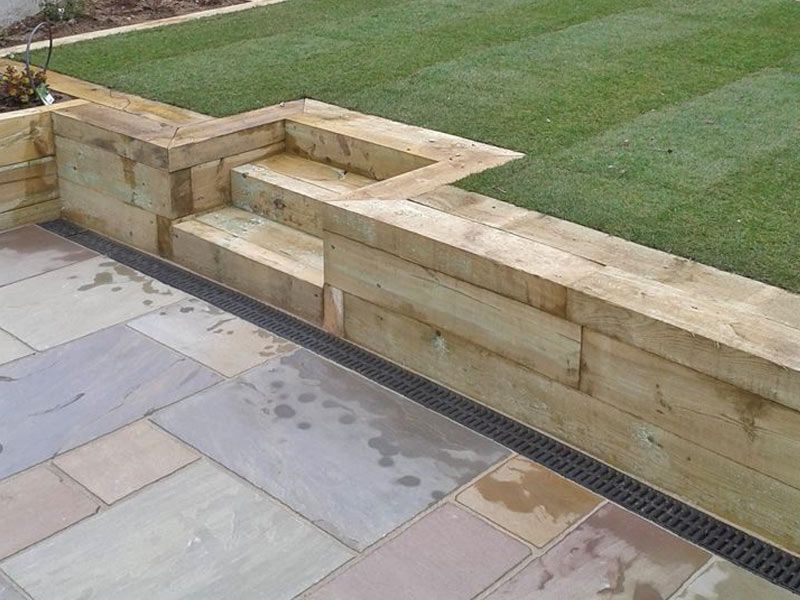
Types Of Sleepers For Retaining Walls
When constructing retaining walls, selecting the right type of sleeper is essential for both functionality and aesthetics. Sleepers serve as the foundation, providing stability and structure. Depending on the material chosen, sleepers can influence the durability, appearance, and maintenance needs of the wall. In this guide, we explore the various materials available for sleepers, their benefits, and drawbacks, helping you choose the best option for your project.
1. Timber Sleepers
Overview
Timber sleepers are a classic and popular choice for retaining walls due to their natural appeal and availability. Their versatility makes them suitable for a range of projects, from garden walls to larger structural applications. Timber sleepers come in two primary types: hardwood and softwood.
Types of Timber Sleepers
Hardwood Sleepers (e.g., Oak, Jarrah)
Hardwood sleepers are renowned for their longevity and strength, making them ideal for structural use. These sleepers are generally more expensive but offer excellent durability, especially in environments prone to moisture. Their dense composition helps resist wear and tear over time, making them a long-term investment.
Softwood Sleepers (e.g., Pine, Douglas Fir):
Softwood sleepers are lighter and more affordable than hardwood options. However, they typically require treatment to prevent rot and insect damage, especially in outdoor applications. While not as long-lasting as hardwood, softwood sleepers can still be a reliable option with proper care and maintenance.
Pros and Cons of Timber Sleepers
Pros:
Timber sleepers provide a natural, rustic aesthetic that blends seamlessly with outdoor environments. They are relatively easy to cut and install, making them a popular choice for DIY projects. Additionally, many timber sleepers are eco-friendly, particularly those sourced from sustainable forests.
Cons:
Without proper treatment, timber sleepers are susceptible to rot, insect infestation, and weathering. Regular maintenance, including sealing and treating the wood, is necessary to prolong their lifespan. They may also warp or crack over time, particularly in areas with extreme weather conditions.
2. Recycled Plastic Sleepers
Overview
Recycled plastic sleepers are an innovative, eco-conscious alternative to traditional materials. These sleepers are made from recycled plastics, offering a sustainable solution that helps reduce waste while providing reliable performance.
Durability
One of the standout features of recycled plastic sleepers is their resistance to rot, insects, and weather-related damage. These sleepers are built to last, requiring little to no maintenance once installed. Their durability makes them a cost-effective option in the long run, despite a higher initial investment.
Pros and Cons of Recycled Plastic Sleepers:
Pros:
Recycled plastic sleepers are incredibly durable and require minimal upkeep, making them a convenient option for busy homeowners or commercial projects. They are also an environmentally friendly choice, as they repurpose waste materials into functional products. Additionally, they are resistant to common issues like rot, insect damage, and weathering.
Cons:
While highly practical, recycled plastic sleepers often come with a higher upfront cost than timber. Their appearance can also be less appealing to those seeking a more natural look, and color options may be limited compared to other materials.
3. Concrete Sleepers
Overview
Concrete sleepers are the go-to option for projects that demand strength and longevity. These sleepers are often used in commercial applications or retaining walls that require a high level of structural integrity. Concrete is virtually impervious to the elements, ensuring that your retaining wall remains stable for years to come.
Strength and Longevity
Concrete sleepers are exceptionally durable, offering unmatched resistance to weather, rot, and pests. Their strength makes them ideal for large-scale retaining walls that need to support significant loads. Once installed, concrete sleepers require very little maintenance, adding to their appeal for long-term projects.
Pros and Cons of Concrete Sleepers
Pros
Concrete sleepers are low-maintenance and offer unparalleled durability. They come in various designs, including textured finishes that mimic the appearance of timber, providing aesthetic flexibility. These sleepers are also resistant to fire, moisture, and extreme weather conditions.
Cons
The main drawback of concrete sleepers is their weight, which can make installation more challenging, often requiring professional help. They are also more expensive upfront, and while they offer practical benefits, they lack the organic appearance of timber.
4. Metal Sleepers (Steel or Aluminum)
Overview
Metal sleepers offer a modern, industrial aesthetic, making them an attractive option for contemporary landscaping and structural applications. Available in materials such as steel and aluminum, metal sleepers provide exceptional strength and longevity.
Longevity
Metal sleepers are highly durable, capable of withstanding the elements without succumbing to rot, insect damage, or warping. When properly treated, they resist corrosion, ensuring a long-lasting and stable retaining wall.
Pros and Cons of Metal Sleepers:
Pros:
Metal sleepers are incredibly strong and offer a sleek, modern look that complements minimalist or industrial-style designs. They are highly resistant to weathering, pests, and decay, especially when treated with anti-rust coatings. Metal sleepers can also be customized to fit specific design preferences.
Cons:
Metal sleepers tend to be more expensive than timber or recycled plastic options, and their installation often requires professional expertise due to their weight and handling requirements. In certain environments, such as coastal areas, metal sleepers may be prone to corrosion if not properly maintained.
When choosing sleepers for your retaining wall, it’s crucial to consider the specific needs of your project. Timber sleepers offer a natural and classic look but require regular maintenance. Recycled plastic sleepers are an eco-friendly and low-maintenance option but may lack the aesthetic appeal of timber. Concrete sleepers provide unbeatable durability and strength, though they can be challenging to install. Lastly, metal sleepers bring a modern and durable option, with the tradeoff of a higher cost and potential installation difficulties.
Selecting the right type of sleeper will depend on your project’s aesthetic, budget, and maintenance preferences. Each material offers unique advantages, so choose wisely to ensure the longevity and stability of your retaining wall.
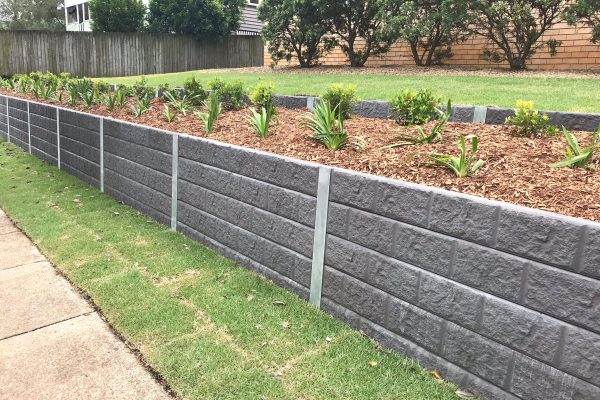
Key Factors To Consider When Choosing Sleepers For Your Retaining Wall
Selecting the right sleepers for your retaining wall is a crucial decision that impacts both the functionality and aesthetics of your outdoor space. Each factor, from the soil type to your budget, plays a role in ensuring that your wall remains sturdy, sustainable, and visually appealing. Below, we’ll explore the most important considerations to guide you through the decision-making process.
Soil and Drainage Conditions
One of the most critical factors when choosing sleepers is understanding how they will interact with the surrounding soil and drainage conditions. Different types of sleepers, such as timber, concrete, or recycled plastic, perform uniquely under varying soil types and moisture levels. For instance, timber sleepers can decay faster in wet or clay-heavy soil unless properly treated, while concrete sleepers are better suited for areas with poor drainage as they resist water damage.
Proper drainage is essential in preventing the retaining wall from weakening over time. If water pools behind the wall, it can cause sleepers to rot, warp, or even collapse, especially if you’re using timber. Therefore, it’s important to install a drainage system that redirects water away from the structure. In some cases, gravel backfilling or installing drainage pipes might be necessary to ensure longevity. When assessing your soil and drainage conditions, make sure to consult with a professional if needed to avoid costly mistakes.
Load-Bearing Needs
Not all sleepers are created equal in terms of load-bearing capacity. Assessing the weight that your retaining wall will need to support is a vital step in choosing the right sleepers. A small garden bed might only require lightweight timber sleepers, but if you’re building a wall to hold back significant amounts of earth, you’ll need to consider sturdier materials such as concrete or steel-reinforced sleepers.
Load-bearing needs also vary depending on the wall’s height and the slope of the land it is supporting. Taller walls or those holding back steep embankments require sleepers that can handle higher pressure without buckling. To avoid future issues like shifting or cracking, ensure the sleepers you choose are rated for the load they will bear, and always follow local building codes and standards.
Environmental Impact
As environmental concerns become increasingly important, more homeowners are looking for eco-friendly options when building retaining walls. The type of sleepers you choose can have a significant impact on the environment, so it’s worth considering the sustainability of your materials.
Timber sleepers, particularly those sourced from sustainable forests, are often considered a greener option due to their biodegradable nature. However, it’s important to ensure they are treated with non-toxic preservatives to minimize environmental harm. Recycled plastic sleepers, while not biodegradable, are another sustainable option as they repurpose waste materials and are highly durable, lasting decades without rotting or leaching harmful chemicals. Concrete sleepers, though durable, require a significant amount of energy to produce, making them less eco-friendly in comparison. By weighing these factors, you can make an informed choice that aligns with your environmental values.
Budget Considerations
Cost is a significant factor in any home improvement project, and retaining walls are no exception. Sleepers vary greatly in price, so understanding your budget and the cost of different materials will help you make the best choice for your project.
Timber sleepers are often the most budget-friendly option, especially if you opt for untreated or softwood varieties. However, they may require more maintenance and have a shorter lifespan compared to concrete or recycled plastic sleepers. On the other hand, concrete sleepers tend to be more expensive upfront, but their longevity and minimal maintenance needs can make them a more cost-effective choice in the long run. Recycled plastic sleepers fall somewhere in between, offering durability at a moderate price point. When planning your project, consider not only the initial cost of the materials but also any long-term maintenance and replacement expenses.
Aesthetic Preferences
Your choice of sleepers will significantly influence the overall aesthetic of your retaining wall and the surrounding landscape. Each material brings its own unique visual appeal, so it’s important to choose a style that aligns with your design vision.
Timber sleepers offer a natural, rustic look that blends seamlessly into most landscapes, making them ideal for gardens or more traditional settings. Concrete sleepers, with their sleek and modern appearance, are better suited for contemporary designs. Recycled plastic sleepers can mimic the look of timber but offer a cleaner, more uniform finish that works well in both modern and classic designs. Additionally, some sleepers come in a variety of colors, finishes, and textures, allowing you to customize the appearance of your wall to match your personal taste. Consider how the sleepers will complement other elements in your outdoor space, such as pathways, plants, and fences, to create a cohesive and attractive design.
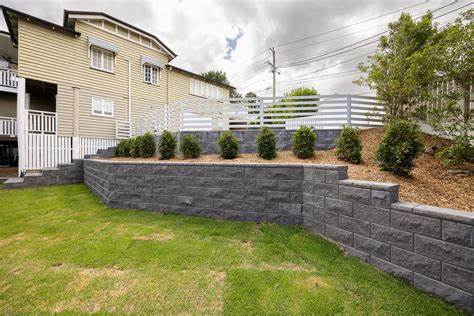
Step-By-Step Guide: How To Build A Retaining Wall With Sleepers
Building a retaining wall with sleepers is a popular and effective method to stabilize a sloping area while adding a rustic or contemporary touch to your landscaping. Using sleepers—large, durable wooden beams—provides a solid foundation and a visually appealing structure that can withstand the pressure of soil and water. This step-by-step guide will walk you through the process, from planning and preparation to the finishing touches, ensuring you create a retaining wall that is not only functional but also long-lasting.
Step 1: Planning and Preparation
Before diving into the physical work, it’s crucial to invest time in the planning and preparation phase. Proper preparation helps avoid mistakes during the construction process and ensures the longevity of your retaining wall.
How to Measure and Mark the Area:
Start by determining the exact location where you want to build the retaining wall. Use stakes and string to mark out the perimeter. Measuring the length and width is critical, as this will determine how many sleepers you’ll need. Ensure that your measurements are accurate to avoid running out of materials mid-project.
Considerations for Height and Design:
The height of the retaining wall will dictate the amount of support required. For walls up to 1 meter high, sleepers are usually sufficient on their own. However, taller walls may need additional reinforcement, such as pins or rebar. When designing, consider whether you want the sleepers to be placed horizontally or vertically, as this will impact both the appearance and the construction process. Don’t forget to check with local building codes to ensure your wall height complies with regulations.
Step 2: Excavation and Foundation
Laying a solid foundation is the backbone of any sturdy retaining wall. Without proper groundwork, the wall can shift or collapse over time, especially under the pressure of the retained soil.
The Importance of Laying a Solid Foundation:
Start by digging a trench where the wall will sit. The depth of the trench will vary depending on the height of the wall, but a general rule of thumb is to dig down at least one-third of the wall’s height. For example, if your wall is 90 cm tall, the trench should be about 30 cm deep. Once dug, fill the trench with a layer of gravel for drainage, followed by a concrete footing if the wall is particularly high or if the soil is unstable. This foundation will prevent the wall from shifting over time.
How to Dig and Level the Area for Stability:
Excavate the soil evenly and use a spirit level to ensure that the trench is perfectly horizontal. An uneven foundation can lead to an unstable wall, so it’s vital to take the time to make this step as accurate as possible. Compact the soil to provide a firm base for the sleepers, reducing the likelihood of any future settling that could cause the wall to lean or collapse.
Step 3: Installing the Sleepers
Once the foundation is in place, you can begin installing the sleepers. This is where your retaining wall will start to take shape.
Detailed Instructions for Laying the First Row of Sleepers:
Start with the first row of sleepers, positioning them securely in the trench. Ensure that they are level from end to end as well as from front to back. You can use a rubber mallet to gently tap them into place if needed. Ensuring the first row is level is crucial, as it will serve as the base for all subsequent rows. Any slight tilt or unevenness at this stage will be magnified as you build higher.
Techniques for Securing Subsequent Rows with Pins, Rebar, or Screws:
After the first row is set, the following rows can be added. Secure each row using either steel pins, rebar, or long screws designed for timber. Pins or rebar are typically driven through pre-drilled holes in the sleepers into the ground to provide lateral stability. Screws can also be used to fasten sleepers to one another, especially if the sleepers are stacked horizontally. For added strength, stagger the sleepers like bricks in a wall, overlapping the joints to distribute the load more evenly.
Step 4: Finishing Touches
The finishing touches will not only improve the appearance of your retaining wall but also help ensure its durability and functionality.
How to Backfill and Ensure Proper Drainage:
Once the sleepers are installed, you need to backfill the area behind the wall. Use gravel or crushed stone to fill the space directly behind the wall. This helps with drainage, preventing water from building up behind the wall, which could add pressure and potentially cause the wall to fail. A drainage pipe can also be installed behind the bottom row of sleepers to further facilitate water movement away from the wall.
Tips for Staining, Painting, or Sealing the Sleepers for Longevity:
To prolong the life of your retaining wall, consider treating the sleepers with a protective coating. Staining or painting can enhance the appearance of the wood, giving it a polished finish that complements your landscape design. Sealing the wood is equally important, especially if the sleepers are made from untreated timber. Sealants help protect the wood from moisture, pests, and decay, ensuring that your retaining wall remains strong and aesthetically pleasing for years to come.
By following this step-by-step guide, you can confidently build a retaining wall with sleepers that is both attractive and functional. Whether you’re stabilizing a sloped area in your garden or adding a decorative element to your landscape, a well-constructed retaining wall will serve its purpose for many years to come. Remember to plan carefully, invest in a solid foundation, and take your time during installation to ensure the best results.
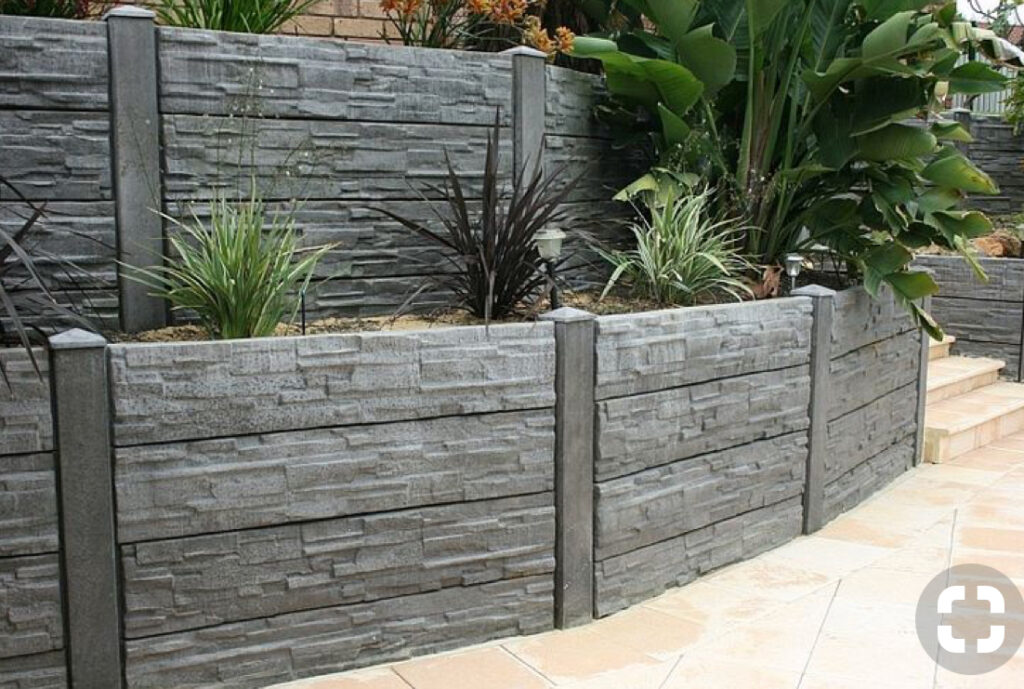
Maintenance Tips For Keeping Your Retaining Wall In Top Shape
Retaining walls are a practical and stylish addition to any landscape, but to keep them in top shape and performing at their best, regular maintenance is essential. Whether your retaining wall is built with timber, plastic, or concrete sleepers, a few simple care tips can ensure it stands the test of time. Below, we’ve broken down how to maintain these different materials and keep your retaining wall looking great for years to come.
Timber Sleepers: Treatment and Protection Against Rot, Insects, and Weathering
Timber sleepers bring a natural and rustic look to any outdoor space, but because wood is a living material, it’s prone to wear and tear if not properly cared for. To ensure your timber sleepers last, regular treatment and sealing are crucial.
1. Treating the Timber: Every couple of years, treat the timber with a wood preservative. This will protect it from moisture, which can lead to rot, as well as insect infestations that can compromise the integrity of the wood. It’s best to apply the preservative during dry weather for maximum absorption.
2. Sealing for Longevity: After applying a preservative, consider sealing the timber with a waterproof sealant. This creates a protective barrier against weathering. Rain, snow, and even harsh sunlight can degrade untreated wood over time, causing it to crack or warp. Sealing the wood will help lock in moisture and prevent damage from the elements.
3. Routine Maintenance: Even with treatment, you should regularly check for signs of rot or insect damage. Look for soft spots, discoloration, or areas where the wood feels weakened. Catching these issues early allows for timely repairs, extending the lifespan of your wall.
Plastic and Concrete Sleepers: Cleaning and Maintenance for Longevity
If your retaining wall features plastic or concrete sleepers, maintenance will be a bit different from timber. These materials are naturally more durable and resistant to weathering, but they still benefit from routine upkeep to maintain their appearance and structural integrity.
1. Cleaning Plastic Sleepers: Plastic sleepers are relatively low-maintenance, but they can accumulate dirt, mold, or algae over time. Cleaning them is straightforward. A simple mixture of warm water and mild soap, combined with a soft brush, can easily remove grime. For stubborn stains, consider using a pressure washer on a gentle setting. Regular cleaning will not only keep your wall looking fresh but also prevent any buildup that could affect its stability.
2. Maintaining Concrete Sleepers: Concrete sleepers are incredibly durable, but they’re not immune to issues like staining, cracking, or surface erosion. Periodically clean concrete sleepers with water and a stiff brush to remove any surface dirt or algae. Inspect the concrete for cracks or chips, especially after freezing weather, as moisture can seep into cracks, leading to further damage. Sealing concrete sleepers with a water-repellent sealant can also provide added protection against weathering.
Annual Checks: Preventative Inspections for Long-Term Stability
No matter what materials your retaining wall is made of, it’s essential to perform annual inspections. These checks will help you catch any signs of trouble early before they become costly repairs.
1. Check for Shifting: Retaining walls are designed to hold back soil, but over time, factors like weather, plant growth, and settling ground can cause shifting. Inspect your wall for any signs of movement. This could be a visible lean or gaps forming between the sleepers. Shifting can compromise the structure’s effectiveness, so addressing it early is critical.
2. Erosion Control: Look for signs of erosion around your retaining wall. Soil erosion can weaken the foundation, leading to instability. If you notice soil washing away, consider installing drainage solutions like gravel, geotextiles, or additional support to prevent further damage.
3. Sleeper Wear and Tear: As part of your annual checkup, closely inspect the individual sleepers. Are they showing signs of wear? Are any sleepers cracked, split, or excessively weathered? Addressing these issues sooner rather than later can prevent the problem from spreading and affecting the entire wall’s structural integrity.
In conclusion, keeping your retaining wall in excellent condition requires some periodic attention, but the results are well worth it. With proper treatment, cleaning, and regular inspections, you’ll ensure your wall not only lasts but continues to enhance your outdoor space for years to come. Whether it’s timber, plastic, or concrete, a little care goes a long way in maintaining the beauty and functionality of your retaining wall.
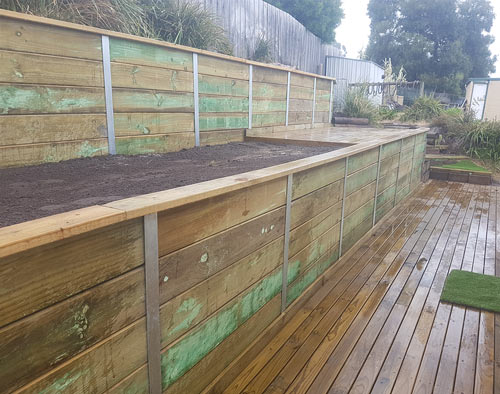
Common Mistakes To Avoid When Using Sleepers For Retaining Walls
When constructing a sleeper retaining wall, attention to detail is critical to ensure the structure remains sturdy and lasts for years. Unfortunately, many DIY enthusiasts and even some contractors often overlook essential steps, leading to common mistakes that can jeopardize the integrity of the wall. Here’s a closer look at some of the most frequent errors made and how you can avoid them.
1. Poor Drainage Solutions
One of the most common and detrimental mistakes made when building sleeper retaining walls is neglecting proper drainage. Retaining walls are designed to hold back soil, and with that comes the inevitable build-up of water behind the wall. Without an adequate drainage system, water can accumulate, leading to pressure that weakens the wall and causes structural failure.
To avoid this, it’s vital to incorporate drainage solutions, such as installing gravel behind the wall and adding weep holes or drainage pipes to allow water to escape. This will prevent water from building up behind the wall, which can otherwise lead to costly repairs or even complete collapse.
2. Improper Alignment and Leveling
Another critical mistake is not taking the time to properly align and level the sleepers. If sleepers are uneven or misaligned, this can create weak spots within the wall, ultimately compromising its stability. Over time, an unlevel wall may shift or buckle, leading to significant structural issues that could have been avoided.
Ensuring correct alignment and leveling requires meticulous measurement before setting the sleepers in place. Using tools such as a level and string line can help guarantee that each sleeper is properly positioned. Taking the time to get this right during installation will save you from headaches and additional expenses down the road.
3. Neglecting Local Building Codes
Many homeowners overlook the importance of complying with local building codes when constructing a sleeper retaining wall. Local regulations often dictate specific guidelines related to the height of the wall, the need for permits, and other construction standards that must be followed. Failing to adhere to these regulations can result in fines, forced modifications, or even the requirement to dismantle the wall entirely.
Before starting your project, research the local building codes in your area. Pay attention to any height restrictions, as walls over a certain height may require engineering approval. It’s also important to determine whether a permit is needed for your project. By ensuring your wall complies with local regulations, you can avoid potential legal issues and ensure the wall is both safe and durable.
By addressing these common mistakes early on, you can save yourself from significant problems that could undermine your retaining wall’s effectiveness and longevity. From ensuring proper drainage to taking the time for accurate alignment and adhering to local building codes, paying attention to these details is crucial in the successful construction of a sleeper retaining wall.
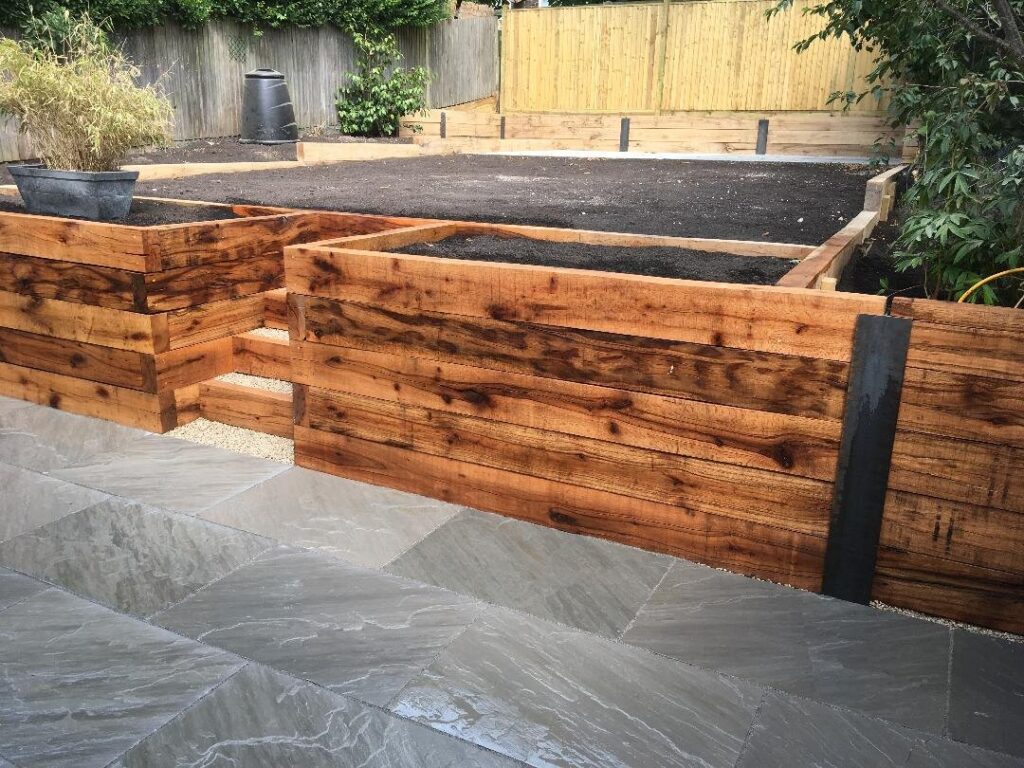
FAQs: About Best Sleepers For Retaining Wall
What are sleepers used for in retaining walls?
Sleepers are long, sturdy beams traditionally used in railroads but are now widely used in landscaping and construction. In retaining walls, they provide structural support, prevent soil erosion, and help create a stable barrier while enhancing the aesthetic appeal of outdoor spaces.
Which type of sleeper is best for retaining walls?
The best type of sleeper depends on your project needs. Timber sleepers offer a natural look but require maintenance. Concrete sleepers are the most durable and require minimal upkeep. Recycled plastic sleepers are eco-friendly and long-lasting, while metal sleepers provide a modern, sleek appearance. Consider your budget, desired look, and longevity when choosing.
How long do timber sleepers last in retaining walls?
Hardwood sleepers can last 20-50 years depending on the quality, treatment, and maintenance. Softwood sleepers have a shorter lifespan, typically 10-20 years, especially if untreated. Properly treated timber can significantly extend its life by protecting it from rot, insects, and moisture.
Do I need to treat timber sleepers for my retaining wall?
Yes, treating timber sleepers is highly recommended, especially softwood varieties. Treating timber protects it from moisture, rot, and insect damage, extending the lifespan of the retaining wall. Hardwood sleepers are more naturally resistant to these issues but may still benefit from treatment.
Are recycled plastic sleepers strong enough for retaining walls?
Yes, recycled plastic sleepers are strong and durable enough for retaining walls. They are highly resistant to rot, moisture, and insects, and they require very little maintenance. However, they are typically more expensive than timber and may have a less natural appearance.
Can I build a retaining wall with sleepers by myself?
Yes, building a retaining wall with sleepers can be a DIY project, especially if you’re using lighter materials like softwood sleepers. However, for taller walls, or when using heavier materials like concrete or metal sleepers, professional help may be required to ensure structural stability and safety.
How deep should the foundation be for a retaining wall with sleepers?
The foundation depth depends on the height and load-bearing needs of the wall. Generally, you should dig a trench at least 150-200mm (6-8 inches) deep and 450-600mm (18-24 inches) wide for the base of the wall. This provides a stable foundation and allows for proper drainage to prevent shifting or erosion.
What’s the difference between hardwood and softwood sleepers?
Hardwood sleepers, like oak and jarrah, are dense, strong, and long-lasting, making them ideal for retaining walls. Softwood sleepers, such as pine and fir, are lighter and less expensive but require regular treatment and maintenance to protect them from rot and insects. Hardwood sleepers are more durable but also more expensive than softwood.
Can metal sleepers corrode in retaining walls?
Metal sleepers, typically made from steel or aluminum, are resistant to corrosion if properly treated or coated. However, in some environments—especially coastal areas with high salt exposure—additional corrosion-resistant treatments may be necessary to prevent rusting over time.
How much do sleepers cost for retaining walls?
Costs vary depending on the material. Timber sleepers range from $20 to $50 per sleeper, depending on the type and treatment. Recycled plastic sleepers can cost between $50 and $100 each. Concrete sleepers are priced around $50 to $120 per sleeper, while metal sleepers can vary widely, typically between $80 and $150.
Conclusion
When building a retaining wall, sleepers are a popular option due to their durability, versatility, and aesthetic appeal. Timber sleepers, particularly hardwood or treated pine, can last 15 to 30 years depending on factors like quality, treatment, and environmental exposure. While a skilled DIY enthusiast can handle smaller retaining walls under one meter with proper planning, taller walls require professional expertise to ensure safety and structural integrity, as well as compliance with local regulations. Foundation depth is key to stability, with the footing typically needing to be one-third the height of the wall, filled with compacted gravel or concrete for support and drainage. Recycled plastic sleepers offer an eco-friendly, low-maintenance alternative but may not be as strong as timber or concrete sleepers in high-pressure scenarios. Concrete sleepers, known for their durability and load-bearing capacity, are ideal for taller, long-lasting walls, while timber sleepers offer a natural look that can last for decades with proper care. Ultimately, the best sleeper material depends on your project’s needs, budget, and landscape conditions, but with careful planning and attention to installation, you can create a sturdy, visually appealing retaining wall.
About the Author:
Mike Veail is a recognized digital marketing expert with over 6 years of experience in helping tradespeople and small businesses thrive online. A former quantity surveyor, Mike combines deep industry knowledge with hands-on expertise in SEO and Google Ads. His marketing strategies are tailored to the specific needs of the trades sector, helping businesses increase visibility and generate more leads through proven, ethical methods.
Mike has successfully partnered with numerous companies, establishing a track record of delivering measurable results. His work has been featured across various platforms that showcase his expertise in lead generation and online marketing for the trades sector.
Learn more about Mike's experience and services at https://theleadguy.online or follow him on social media:

